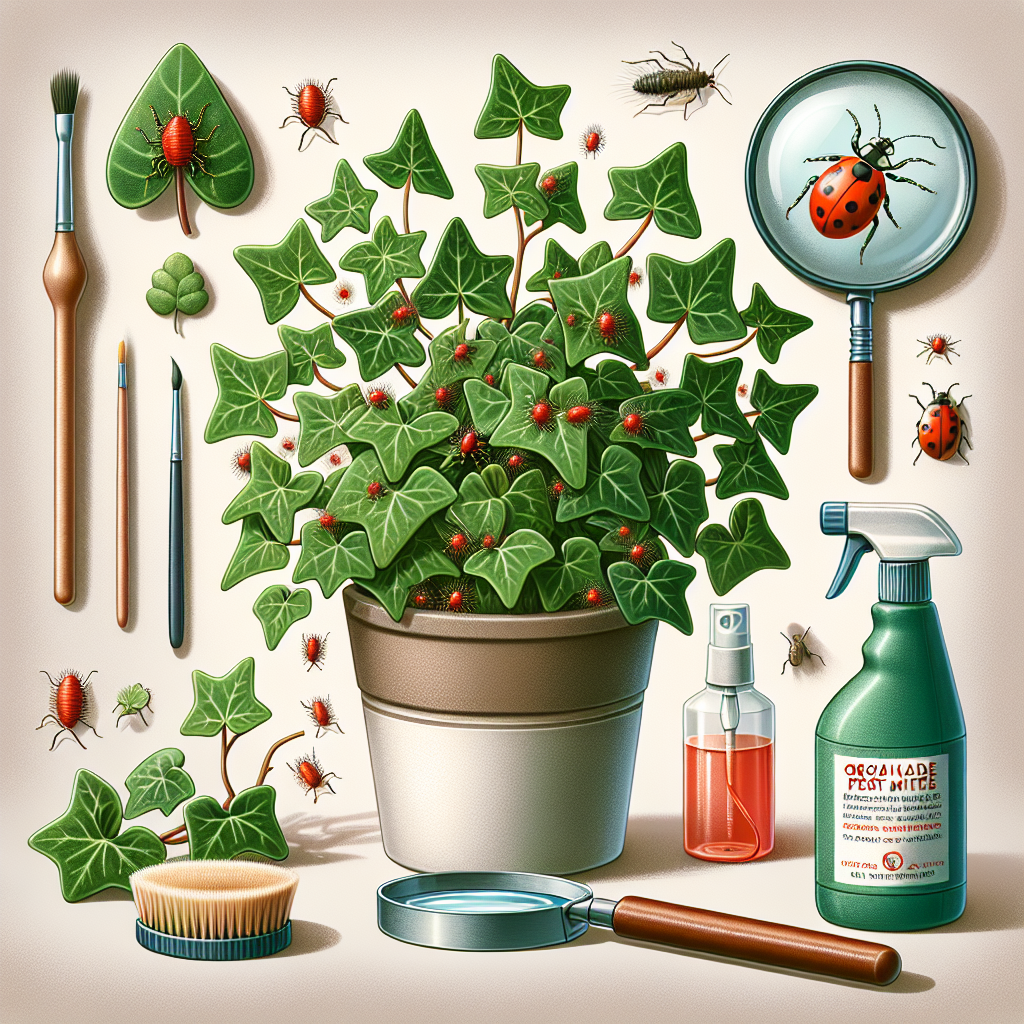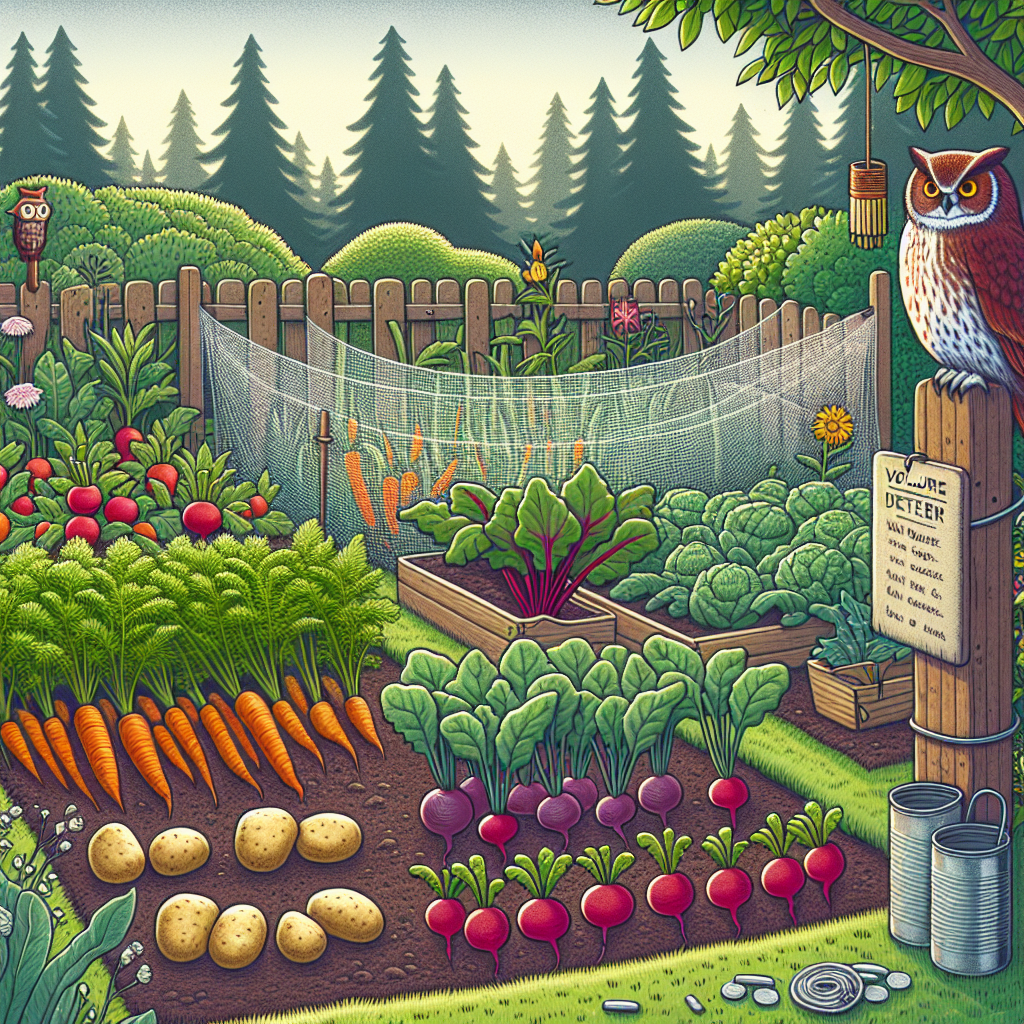Shielding Lettuce from Downy Mildew Breakouts
Published April 4, 2024 at 9:41 pm
Discover effective strategies to protect your lettuce crops from the devastating impact of downy mildew, ensuring healthy growth and bountiful harvests.

“`html
- Pet Friendly: Not all lettuce varieties are resistant to downy mildew, but most are safe for pets. Always verify with a local expert.
- Light Requirements: Lettuce generally requires full sun to partial shade, ideally 4-6 hours of sunlight per day.
- Watering: Consistent, even watering is vital, avoiding over-saturation to reduce mildew risks.
- Humidity: Moderate to high humidity can contribute to downy mildew, look for ways to mitigate this in your garden.
- Temperature: Lettuce thrives in cooler temperatures, which also helps keep downy mildew at bay.
- Difficulty: With the right knowledge and care, protecting lettuce from downy mildew is manageable, even for beginners.
Understanding Downy Mildew in Lettuce
Downy mildew, caused by the oomycete pathogen Bremia lactucae, is a common plague to lettuce growers worldwide. If you might be dealing with little yellow spots or a fluffy white mold on your lettuce leaves, you are witnessing the telltale signs of this disease.
Managing downy mildew is essential for healthy lettuce crops, not to mention the fact that it can wipe out entire fields if left unchecked. Ensuring you are familiar with controlling its spread is fundamental to your gardening success.
Preventative Measures for Downy Mildew
Crafting an environment that is less hospitable to downy mildew starts with meticulous planning. Spacing your plants properly allows for adequate air circulation, which is critical as damp and crowded conditions are ideal for fungal growth.
Incorporating pollinator-friendly practices not only benefits the ecosystem but also encourages natural predators that can help keep pathogen populations in check.
Water Management
The way you water your lettuce can deeply influence the prevalence of downy mildew. Drip irrigation or soaker hoses at the base of the plants minimize moisture on the leaves, which is a primary factor in fungal diseases.
Moreover, watering in the morning will give any moisture on the leaves time to evaporate throughout the day, thereby reducing the risk of fungal development when temperatures drop at night.
Cultural Controls and Hygiene
Simple hygiene practices play a significant role in preventing downy mildew outbreaks. Regularly cleaning tools and disinfecting plant supports can greatly reduce the spread of spores.
Removing infected leaves as soon as you spot symptoms can also help protect your crop, and be sure to dispose of them properly, far from your garden, to prevent spores from being carried back by the wind or insects.
Chemical and Organic Fungicides
While cultural practices are fundamental, sometimes they might not be enough, and fungicides become necessary. Organic options such as copper-based fungicides can be effective if used promptly and appropriately.
For those with larger operations or severe infestations, a scientifically-backed fungicide such as Orondis Ultra Fungicide has received positive reviews for its efficacy against downy mildew in multiple crops, including lettuce.
Find This and More on Amazon
Resistant Varieties
Breeding efforts have led to the development of lettuce varieties with resistance to downy mildew. Leafy greens like ‘Green Towers’ and ‘Crispino’ have shown resilience against certain strains of the pathogen. It’s worth exploring these for a potentially less problematic growing season.
Keep in mind that pathogen strains can evolve, so it’s a good idea to stay informed about the latest resistant varieties by consulting with local nurseries or cooperative extensions.
Encouraging Biodiversity
A diverse ecosystem can help in combating downy mildew. Companion planting with species that repel harmful insects or attract beneficial ones can create a more balanced environment where pathogens find it harder to dominate.
For example, flowers like marigolds can deter nematodes, which can weaken lettuce plants, making them more susceptible to diseases. A variety of crops and season-appropriate planting can also contribute to a healthy garden ecosystem.
Appropriate Soil and Nutrient Management
Downy mildew thrives in nitrogen-rich soils, so monitoring and balancing your soil’s nutrient levels is crucial. Over-fertilizing can prompt lush growth susceptible to fungi, while under-fertilizing can weaken the plant’s natural defenses.
Opt for a balanced, slow-release fertilizer and consider getting your soil tested to know exactly what nutrients it contains and what it may be lacking. This way, you can tailor your fertilizing strategy more precisely to the needs of your lettuce crops.
Early Detection Through Monitoring
Regular monitoring of your lettuce plants can mean the difference between a mild outbreak and total crop failure. Understanding the initial symptoms of downy mildew, like yellowing patterns on the leaves, will help you act fast.
Using magnification tools to inspect the undersides of leaves for spores can also aid in early detection. The sooner you identify and tackle downy mildew, the better your chances of maintaining healthy plants.
Advice from Local Experts and Scientists
When it comes to combating plant diseases like downy mildew, local expertise can be invaluable. University extension offices and master gardener programs are excellent resources for region-specific advice.
Tapping into the research from these experts can provide insights into the most effective treatments and strategies, which might differ depending on your climate and local pathogen strains.
How to Choose the Right Lettuce Variety
Facing the decision of which lettuce to plant? Look beyond the typical favorites and investigate which varieties offer the best resistance to diseases like downy mildew in your area.
Consider the season, local climate, and disease history of your garden when selecting varieties. The more aligned your choice is with these factors, the less you will have to worry about extensive disease management practices.
Maintaining Good Air Circulation
Good ventilation around your plants is key to keeping downy mildew at bay. When planting, give each lettuce head enough room to grow without being choked by its neighbors. Ensuring each plant has space will greatly enhance airflow and reduce the likelihood of disease spread.
Pruning excess leaves to promote air movement can also be helpful. Just remember to sterilize your shears between cuts to avoid inadvertently spreading the disease.
Weed Management
Weeds can not only compete with your lettuce for nutrients and water, but they can also harbor diseases and pests. Keeping your garden free from weeds will reduce these risks and contribute to a healthier growing environment.
A tool like the True Temper 1983800 Best Hand Weeder can be very useful for removing weeds efficiently. Users have appreciated its ergonomic handle and durable construction, making the tedious task of weeding a bit more bearable.
Find This and More on Amazon
Organic Mulches and Covers
Utilizing organic mulches like straw or bark can help reduce soil moisture evaporation, conserving water and reducing the need for frequent watering. This can indirectly mitigate the risk of downy mildew by keeping the foliage dry.
Row covers can also serve as a barrier against spores being carried onto your plants by wind or insects. Just be sure to choose a type that allows light and moisture through but keeps pests out.
Record-Keeping for Disease Management
Meticulous record-keeping might not sound exciting, but it can be one of your best defenses against downy mildew. Logging environmental conditions, watering schedules, and any signs of disease can help you track patterns and identify effective prevention strategies over time.
A simple journal or a gardening app can be your ally in this task, letting you look back and learn from the history of your lettuce growing endeavors.
“““html
Utilizing Resistant Lettuce Varieties
Gardening is an evolving practice, and as such, you might want to consider planting resistant varieties of lettuce as part of your strategy. Varieties like ‘Salvius’ and ‘Anuenue’ are bred specifically for their resistance to downy mildew.
While no cultivar is completely immune, these types of lettuce can give you a head start in the battle against the pathogen. It is also a good idea to rotate these resistant varieties to reduce disease build-up in the soil.
Maximizing Natural Predators in the Garden
Encouraging a balanced ecosystem in your garden involves fostering natural predators that control the population of pests which could contribute to the spread of downy mildew. Lady beetles and lacewings, for example, feed on aphids that can spread disease.
Incorporating plants that attract these beneficial insects can play a crucial role in your prevention efforts. Plants like yarrow, dill, and fennel can attract these helpful bugs and bolster your garden’s defenses.
Climate Considerations for Downy Mildew Prevention
Climate plays a significant role in the spread of downy mildew. In areas with high humidity and cool nighttime temperatures, downy mildew can thrive.
For gardeners in these climates, it might be advantageous to select a planting site with maximal sun exposure and good drainage to combat the humidity and moisture that downy mildew loves. Also, consider structures or man-made breezes that can aid in air circulation.
Professional-Grade Equipment for Serious Gardeners
For those serious about their lettuce production, investing in equipment that aids in disease prevention can be a game-changer. A tool such as the ACF Greenhouses Maxi-Pro 4G High-Volume Sprayer allows for accurate application of fungicides, ensuring you cover all areas of your plants.
According to various user reviews, this sprayer’s fine mist and adjustability reduce waste and increase coverage, making it a favorite for keeping gardens disease-free. Its durability also seems to be praised among gardening enthusiasts.
Find This and More on Amazon
Soil Amendments to Suppress Disease
Adjusting the soil conditions can also suppress the occurrence of downy mildew. Some soil amendments, like composted pine bark, have been shown to possess antifungal properties that can deter the growth of pathogens.
By mixing these into your garden beds, you not only improve soil structure and fertility but may also create a less favorable environment for downy mildew to develop.
Staying Updated with Agricultural Extensions
One of the most underutilized resources for gardeners might be the agricultural extensions offered by many universities. These institutions often publish updated guides and tips on managing common diseases like downy mildew.
Consulting their online resources or attending local workshops can keep you current with the best practices for lettuce care and disease prevention.
Combating Downy Mildew with Biosolutions
For a more natural approach to combating downy mildew, biosolutions are gaining traction. Products like Monterey Complete Disease Control, which is based on the bacterium Bacillus amyloliquefaciens, act as a biofungicide and can help protect your plants by outcompeting the downy mildew pathogen.
Reviews from gardeners indicate that such solutions can be effective when used as part of an integrated disease management strategy, given their potential to suppress pathogen growth while being gentle on plants and the environment.
Structural Modifications to Protect Crops
Creating structures such as low tunnels with plastic sheeting over your lettuce beds can control the moisture levels affecting your plants. These protective covers not only help with temperature control but also shield the plants from excessive dew and rain that could promote downy mildew.
As a bonus, they also act as a physical barrier to pests and offer some protection from harsh weather elements, further contributing to the overall health of your lettuce crops.
The Role of Modern Technology in Disease Detection
Modern technology is revolutionizing how we monitor and manage plant diseases. Tools like weather stations and moisture sensors can provide real-time data that helps predict downy mildew risk and guide your preventive measures.
Smartphone apps are also available now that can model disease risk based on weather forecasts and historical data, allowing even hobbyists to make informed decisions about plant care and fungicide application.
DIY Tips for Downy Mildew Prevention
If you prefer a more hands-on, DIY approach to gardening, there are several home remedies that might help prevent downy mildew. Neem oil, for example, is a natural product that many organic gardeners use as a preventative treatment against a range of garden pests and diseases. It’s said that its effectiveness relies on consistent application before diseases become visible.
Similarly, homemade sprays using baking soda have been touted for their fungicidal properties, though it’s essential to get the concentration right to avoid harming your plants. Natural treatments like these may take more vigilance and persistence, but for many, the eco-friendly benefits are worth it.
Importance of Monitoring and Adapting Strategies
Yielding a harvest of healthy lettuce is about monitoring and adapting your strategies over time. What worked one season may not be as effective the next due to changing weather or new pathogen strains.
Being attentive to your plants’ health and responsive to signs of disease will help you stay one step ahead. Always remember that gardening is a learning process, and each challenge comes with an opportunity to grow and improve.
Seeking Community Support and Sharing Knowledge
Lastly, connecting with other gardeners locally or online can be an invaluable source of support and information. Many gardening communities are eager to share their knowledge and experiences, including how to manage pesky diseases like downy mildew.
Tapping into forums, social media groups, or local gardening clubs can give you a wealth of practical advice, and you might even discover new friends who are just as passionate about lettuce as you are.
Final Thoughts on Protecting Lettuce from Downy Mildew
Protecting your lettuce from downy mildew requires a multifaceted approach that combines preventative measures, keen observation, and sometimes even technological assistance. But the good news is, with the resources and strategies at hand, keeping your lettuce healthy and thriving is absolutely achievable.
Remember to stay patient and persistent; successful gardening is as much about weathering the challenges as it is about enjoying the fruits (or in this case, the vegetables!) of your labor. Here’s to bountiful and healthy lettuce crops!
“““html
Empowering Your Lettuce with Companion Planting
Companion planting can be a powerful ally against downy mildew. Planting lettuce alongside herbs such as garlic or chives, which release natural antifungal substances into the soil, can deter the growth of the pathogen and other detrimental fungi.
Companion planting also promotes biodiversity, which in turn can improve the overall health of your garden ecosystem, making it less likely that any one disease or pest will cause significant damage.
Exploring Natural Remedies for Mildew Control
Some gardeners swear by natural remedies for controlling mildew and other plant diseases. Consider experimenting with milk sprays, which are renowned for their ability to bolster plant immunity and fend off fungus with the enzymes they contain.
Another natural approach is a garlic or baking soda spray, which acts as a preventive measure. These options are easy to prepare at home and can offer a more sustainable alternative to chemical treatments.
Building a Robust Defense with Crop Rotation
Practicing crop rotation is a tried-and-true method that can keep soil pathogens, including downy mildew spores, from getting too comfortable in your garden. Instead of planting lettuce in the same spot year after year, rotate it with other vegetables that are not hosts to downy mildew.
This strategy not only helps prevent the buildup of pathogens but also can promote nutrient balance and soil health, further supporting your lettuce crops and garden’s overall vitality.
Integrating Downy Mildew Education into Your Gardening Practice
Knowledge is power, and when it comes to gardening, the more you know about potential problems like downy mildew, the better equipped you are to prevent them. Educate yourself by reading gardening books, attending local workshops, or even participating in online courses.
This continuous learning will help you refine your gardening practices and implement the most effective strategies for disease prevention and control.
Optimizing Your Garden Layout for Disease Management
The layout of your garden can play a pivotal role in preventing the spread of downy mildew. Create distinct pathways between rows of lettuce to ensure that you can access plants without brushing against them, potentially spreading spores.
Also, planting taller vegetables that require more sun on the north side of lettuce can limit humidity around lettuce plants by casting shadows during the hottest part of the day, thus providing some protection from the heat that encourages downy mildew growth.
Supporting Soil Life for a Stronger Lettuce Crop
Healthy soil microbiology can greatly strengthen plants’ ability to resist diseases, including downy mildew. Incorporating plenty of organic matter like compost into your soil can support a rich web of beneficial microorganisms that support plant health.
These beneficial microbes can outcompete harmful pathogens for space and resources, which not only helps prevent the occurrence of downy mildew but also promotes more vigorous and resilient lettuce plants.
Investing in Quality Seed Stock for Disease Resistance
Starting with high-quality seeds is a cornerstone of healthy lettuce cultivation. Seek out reputable seed suppliers who offer downy mildew-resistant varieties and test their seeds for quality and disease resistance.
Investing a little more in quality seed stock up front can save a lot of trouble down the road by reducing the need for intensive disease management and increasing the chances of a healthy harvest.
Leveraging Community Plant Exchanges for Diverse Varieties
Plant exchanges in your local community can be a treasure trove for finding lettuce varieties that are well-suited to your area and may have natural resistance to downy mildew.
By engaging with fellow gardeners, you can diversify the types of lettuce you grow, experiment with different tactics for disease management, and learn from others’ experiences in a supportive environment.
Combatting Downy Mildew with Ecosystem Services
Ecosystem services, such as birds and bats that feed on insects that could be carrying downy mildew spores, are another natural line of defense. Attracting these allies to your garden by providing nesting sites or water sources can add another layer of protection for your lettuce crops.
By harnessing the power that nature offers, you can create a more self-regulating environment that helps to minimize the occurrence of downy mildew and other garden afflictions.
Wrapping Up: A Healthy Harvest Awaits
As you embark on your gardening journey, armed with knowledge and an array of strategies to protect your lettuce from downy mildew, remember that gardening is as much art as it is science. Trial and error, observation, and adaptability are all part of the experience.
With dedication and care, not only will you become more adept at managing downy mildew, but you’ll be rewarded with the satisfaction that comes from growing your own vibrant, healthy lettuce. Happy gardening!
“`
Shop more on Amazon
Flowers & Plants Team
Flowers & Plants Team


